Related Tags
“The connectivity between the guitar and myself, that vibration is critical”: Famed luthier John Page
Aside from Leo himself, few names are more redolent of Fender’s history than that of John Page, whose work continued to flourish once he left the California guitar empire.
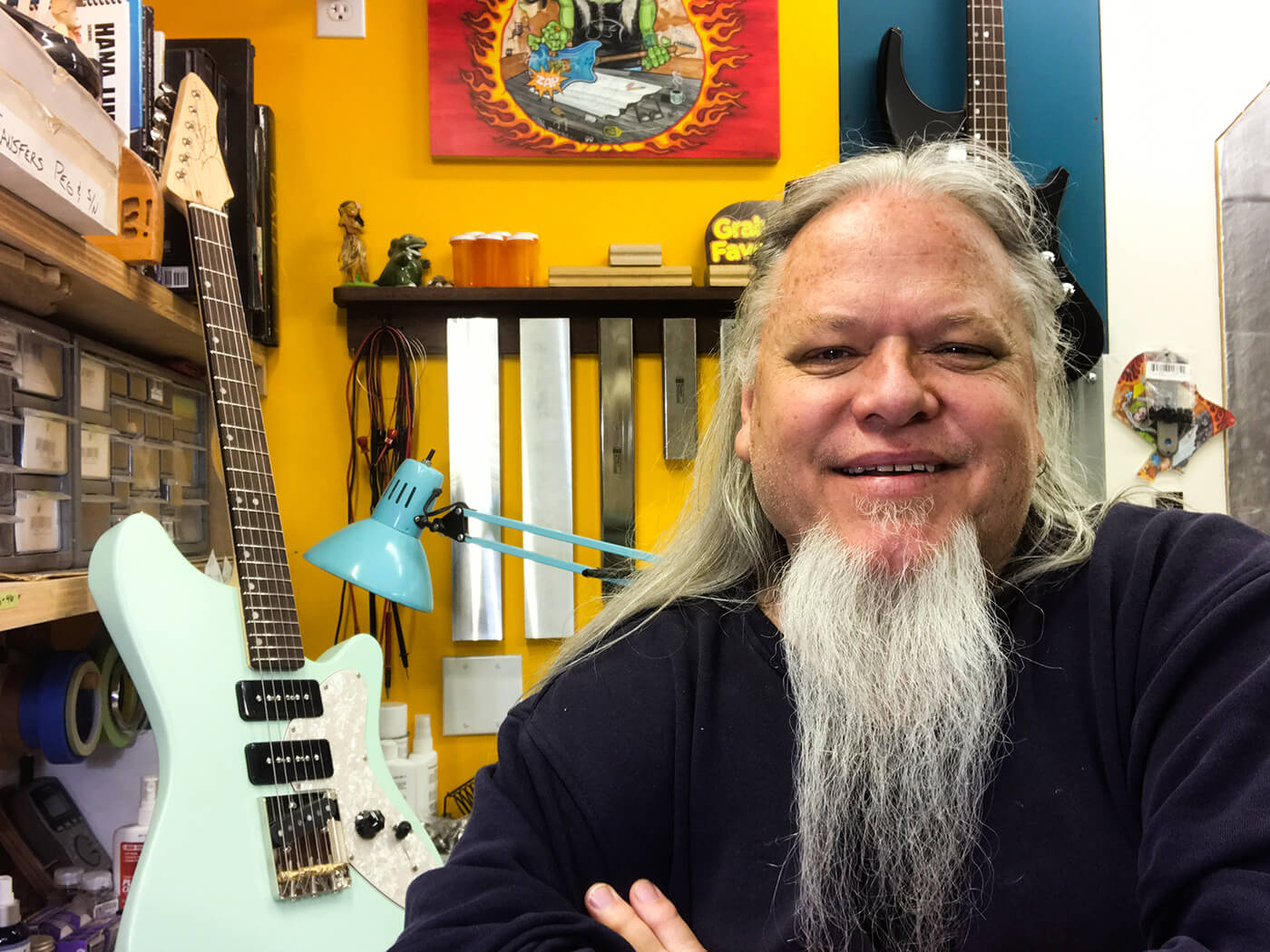
Throughout his life as a player and luthier, John Page has been striving for that intimate connection that helps musicians feel at one with their guitars. If you’re not a player, it’s a notion that might seem peculiar, even kinky, but the importance of truly bonding with a guitar can’t be overstated.
“That connection between the guitar and me as intimate writing partners became key,” says Page. “It was the main thing I wanted in my guitar, this relationship and that vibration, you know? The connectivity between the guitar and myself, that vibration is critical. When I pick up a guitar and feel that before I even plug it in, that’s key to me.
“Some guys use a lot of effects and stuff – and, the way I do my guitars, some of that might get lost on them. But the guy, the tone collector, the cat that sits there and really wants to hear it and feel it, that’s who I build for. But I’m not trying to sell 350,000 guitars a year. It’s a lot easier when you’re just trying to build a dozen or so.”
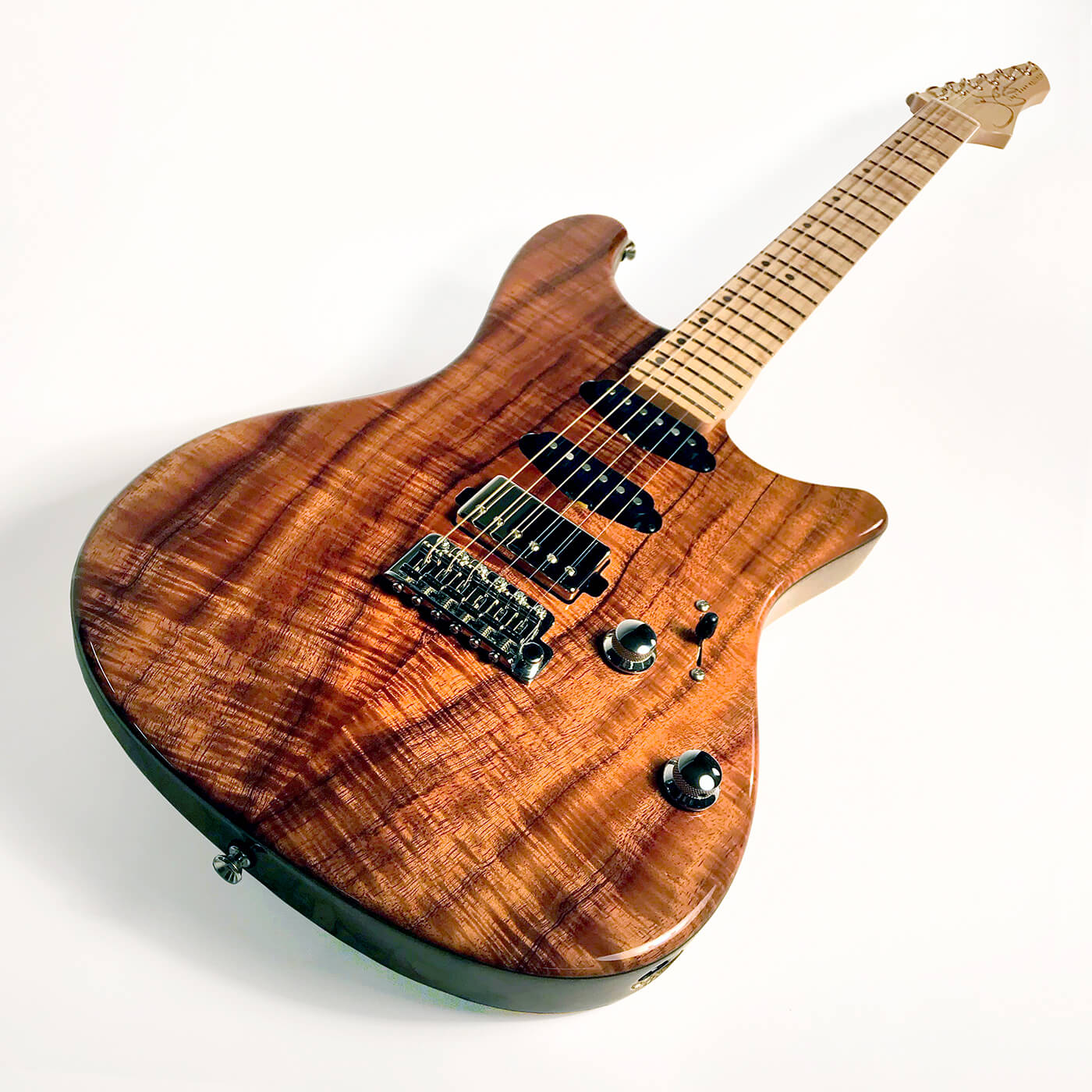
California dreamin’
Page grew up living the Californian dream that defined the image Fender Electric Instruments cultivated in the 1950s and 1960s. Such did his interests and influences converge that we might conclude he was simply fated to end up a mover and shaker at the company – and perhaps he was. The fact that rock ’n’ roll was frowned upon in the Page household only made the electric guitar more alluring, and that the family couldn’t afford to indulge the young guitarist with off-the-shelf instruments spurred the go-getter to get his own woodworking chops in order.
Together, these factors whipped up the perfect storm that blew the aspiring aficionado on course to become a co-founding master luthier of the Fender Custom Shop, and allowed him to sail right on beyond that to one crowning achievement after another.
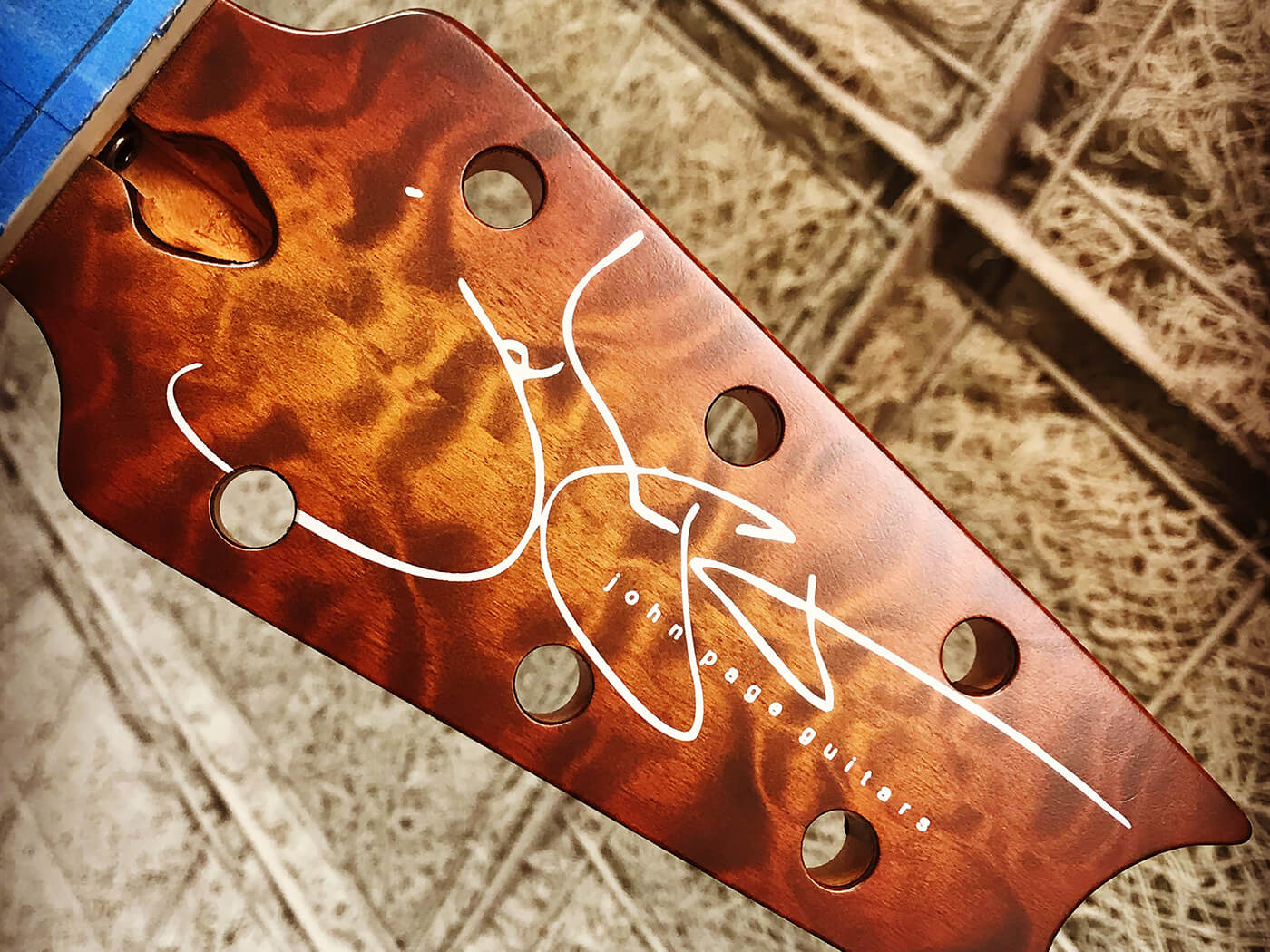
“I grew up in Whittier, California,” says Page, “on the outskirts of Los Angeles in the 1950s and 1960s. So I was raised on surf music. We lived maybe 15 miles from the beach and used to go surfing and all of that, so I grew up with The Ventures, Dick Dale and the whole surf scene.
“My dad was a preacher. I had a very stripped-down, limited childhood, so working all my emotions out in music was mandatory for me! I got into music and songwriting real young. My dad had a cheap old classical guitar he bought in Tijuana, Mexico, and I got that from him and started plunking around to get all my secret emotions out.”

From listening to Dr Demento’s rock show on KPPC-FM while his parents were asleep in bed to playing more parentally approved folk-tinged music with buddies from church, Page was shaping up for a career in music. Before long, however, he began to set his sights more on the instrument than its output.
After messing around with his dad’s nylon-string guitar – taping a cheap microphone to it and rigging an old tape recorder to act as an amplifier of sorts – 14-year-old Page got a part-time job working as a janitor in the oil fields. From there, he saved up enough money to buy cheap Teisco Del Ray guitars and the like from his local pawn shop. “I was trying to get to a Fender,” he says. “But I couldn’t afford one, so I did what I could to get there.”
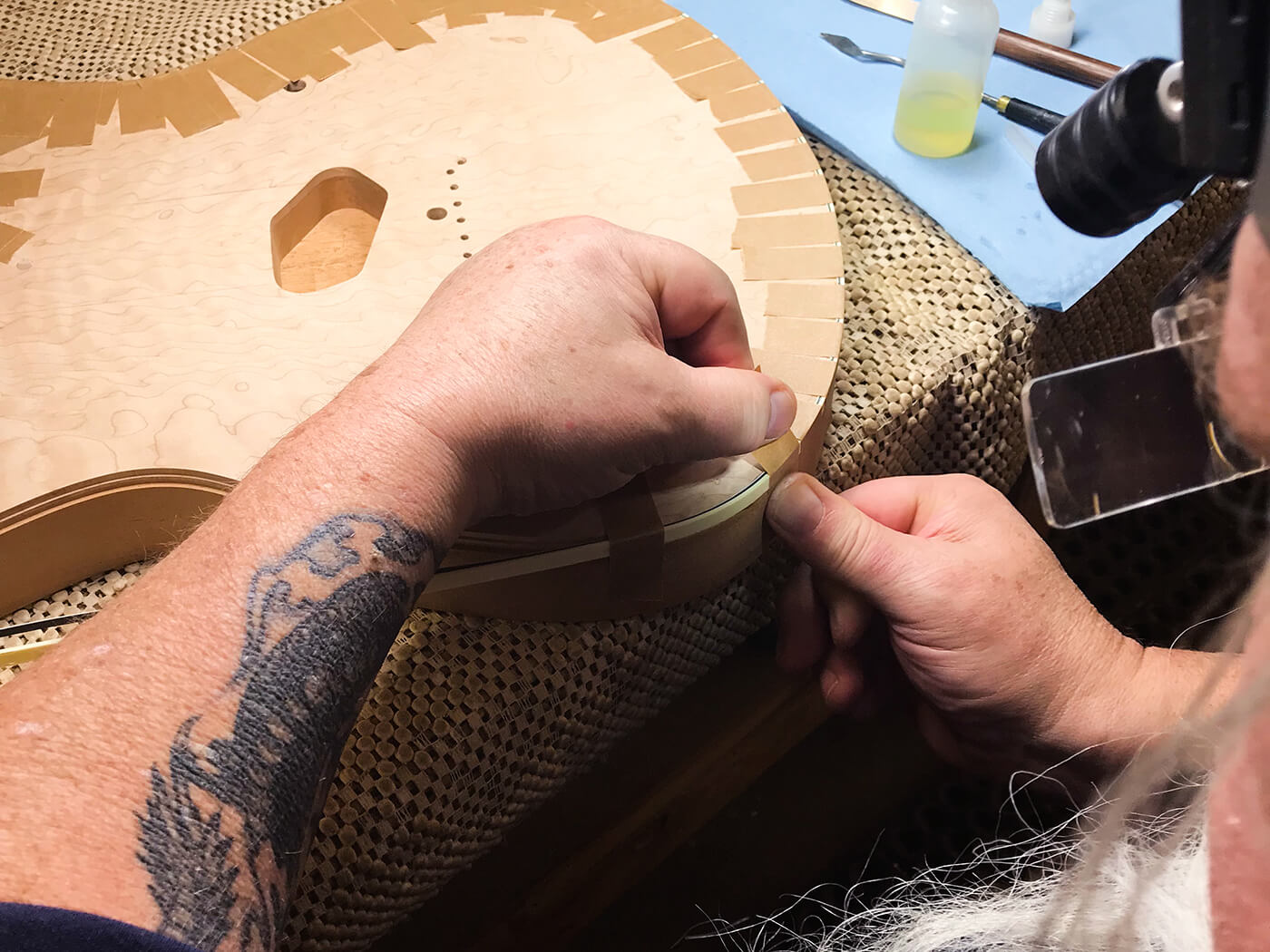
About a year later, at 15 and with no prior training, Page built his first complete guitar – from scratch. Then he built another and another.
“I just kind of looked at what it was,” he says, “and figured my way around it. I screwed up a lot of guitars and threw a lot of guitars away. Honestly, though, it was just a matter of not having the money. I started building guitars and cheapy amplifiers for myself, lighting systems for the band, stuff like that. It was more from financial necessity than anything else. But because I was in Southern California and Fender was nearby, and all my heroes played Fender, I started applying for work there at the age of 16. They didn’t hire me until my 21st birthday, and then that started my life there.”

On-the-job training
Page started at the Fullerton factory in 1978. Fender was his higher education, his apprenticeship, and ‘big chance’ all rolled into one. Having arrived there as a DIY hacker, he was prepared to pay attention to what the pros could teach him – and to work hard.
“I started off on the floor as a neck buffer,” he says, “and within three months I got a job as a model-maker in research and development. That’s when I started working with Freddie Tavares and Greg Wilson and everybody else on the R&D team. I was used to hacking stuff together with cheap tools, and here I walked into a shop with really great tools and mills and lathes that I had never dreamed of owning.
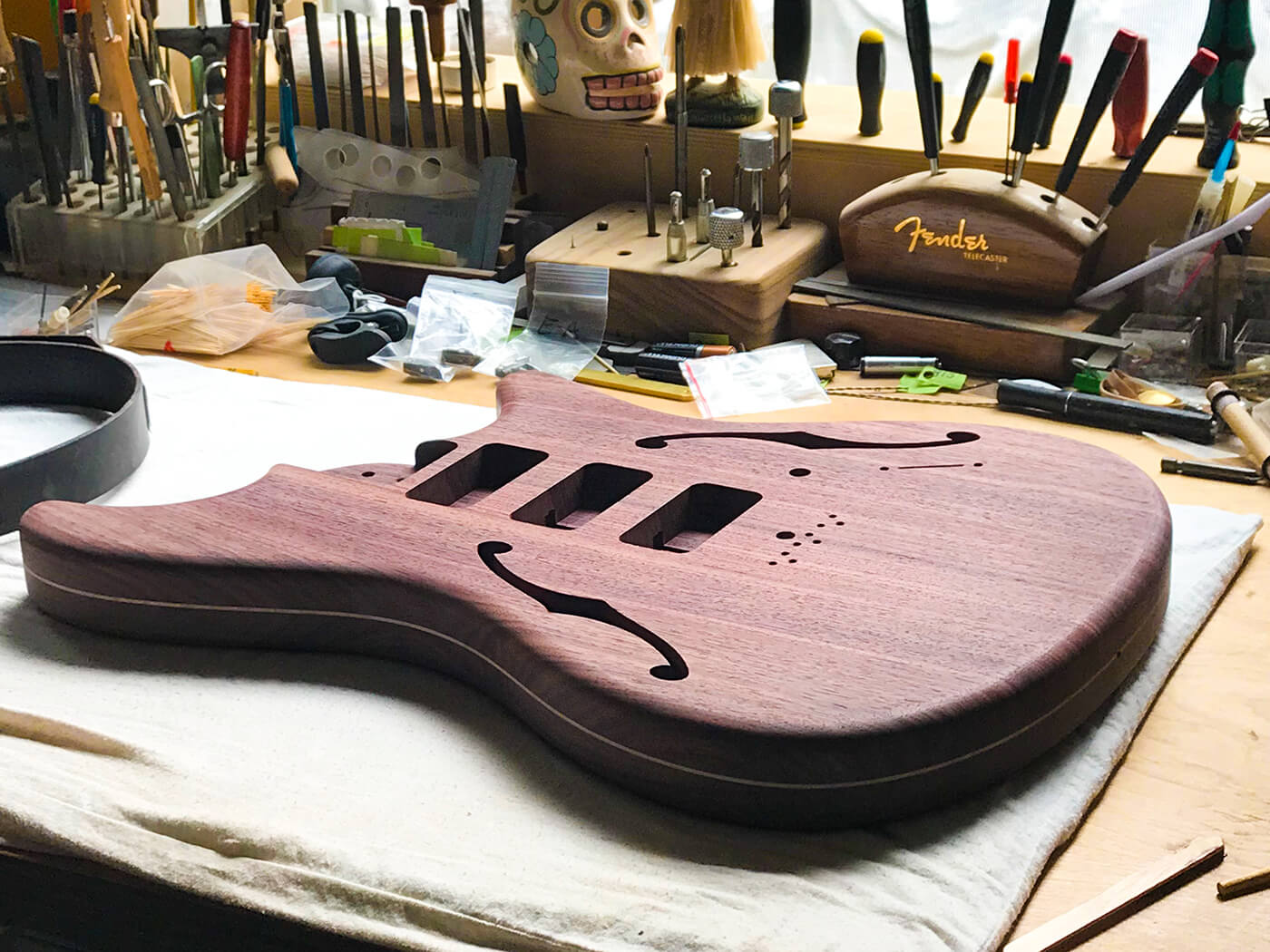
“I had all these ideas, so I worked with Greg and Freddie a lot on design. They kind of sculpted me that way, helping me grow. And when Greg left his position after a few years, I got the job as guitar designer. I was 23 years old.
It may have been what got Page ahead so quickly, but swotting so hard didn’t fly with everyone on the shop floor. “It was interesting,” he says. “I remember the guys on the floor getting mad at me because I was working so hard. ‘Hey, slow down, you’re going to make us look bad!’ I was like, ‘I’m not going to stay here buffing necks forever’.”
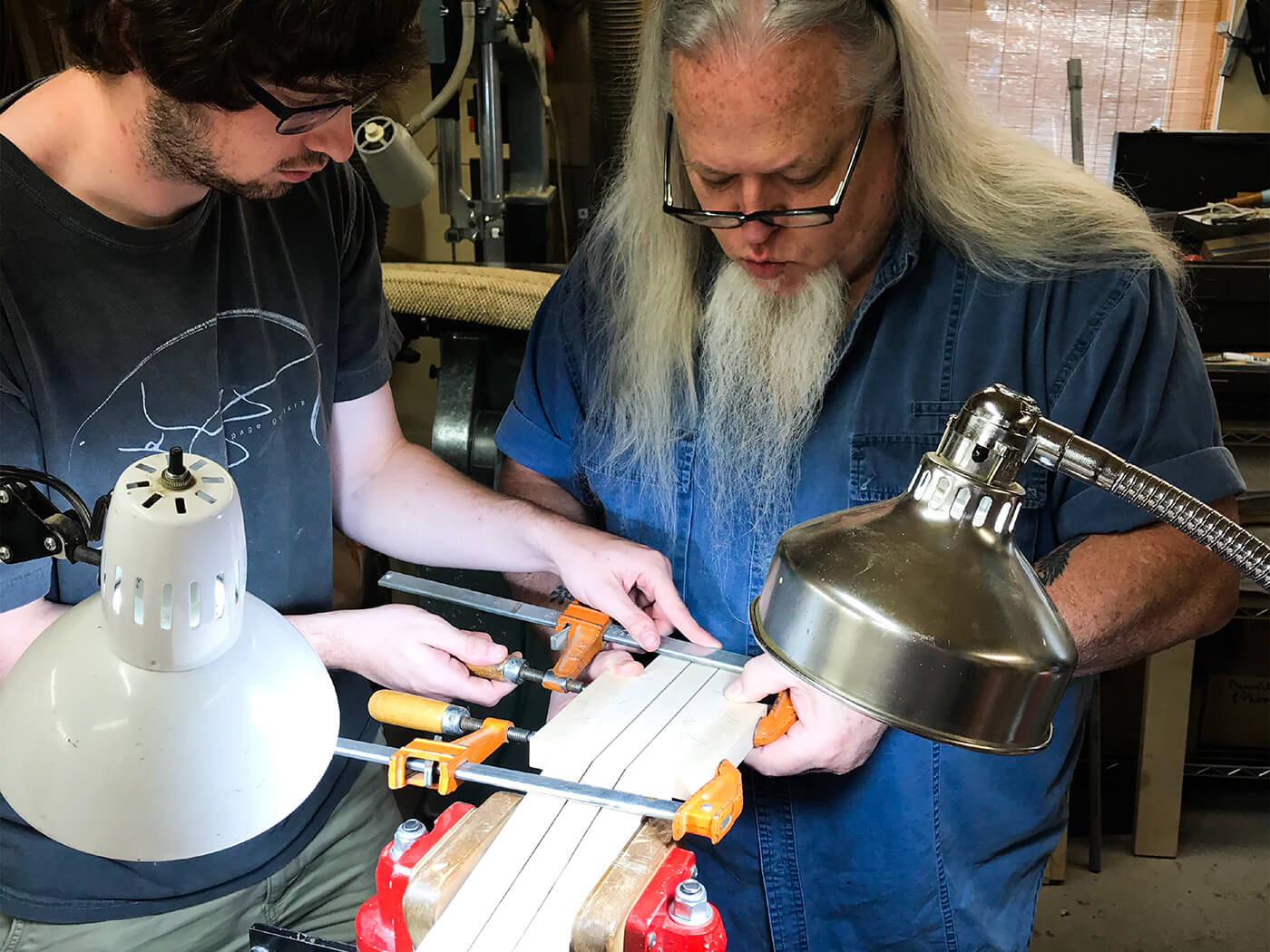
Magic bullet
Early in his tenure as a guitar designer, Page contributed to Fender’s reintroduction into the student-guitar market by taking Greg Wilson’s initial concept for an affordable US-built model all the way through design and release. His effort earned him his first patent – for the guitar’s combined bridge and pickguard – and brought popular new budget-minded Fenders to market in 1981 in the form of the Bullet series.
“I remember my directive from marketing was to design a guitar that could be made for $65 in standard manufacturing cost,” says Page. “I think I came within a dollar of that. I believe it retailed for $199 at the time. So it was a matter of, ‘How can I make the least expensive guitar that’s manufactured here, and use up a lot of parts, Mustang parts and so forth, that are lying around?’
“Probably one of the most key moments in my life was when I got the call. I was in my office in R&D, which was all the way over on the other side of the factory, with multiple buildings in between, and I got a call from the final line saying, ‘Hey, John, the first run of Bullets is coming through’. So, I go walking down – it’s about a half-mile walk – and I go in and see these racks of 200 or 300 red Bullets, you know? And I about peed myself. It was a really cool first product, and it’s funny that it’s hip again. A lot of people are collecting Bullets. They’re bringing decent money.”
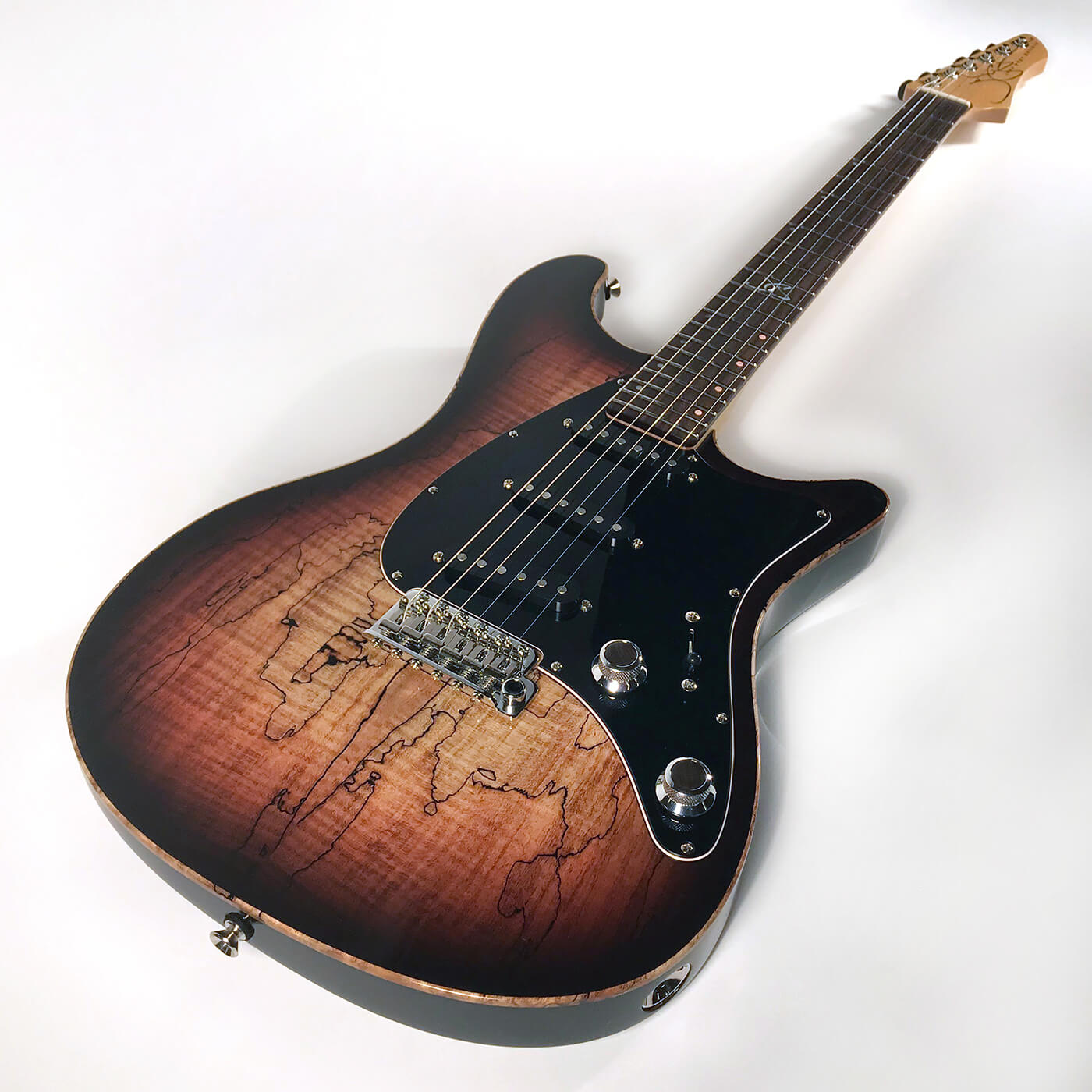
Custom credentials
Having quickly ascended the ranks, Page was already playing a significant role in shaping Fender history. But his biggest part and arguably his greatest contribution to modern electric guitar manufacturing was yet to come. After taking much of 1986 off to work on his own music in the studio, the would-be performer realised he couldn’t carry on without a steady income, and spoke to Fender about returning to work.
“I contacted [then vice president of R&D] Dan Smith and asked him if there were any openings,” says Page. “Dan spoke to [then Fender CEO] Bill Schultz, who gave me a choice of going back to R&D or joining Michael Stevens in opening the Fender Custom Shop. We had discussed the idea of opening a custom shop many years prior; Bill had finally decided to make it happen. I thought that would be pretty cool. I think they gave Michael the chance to yay or nay me and, fortunately, we got along great, thus the partnership began.”
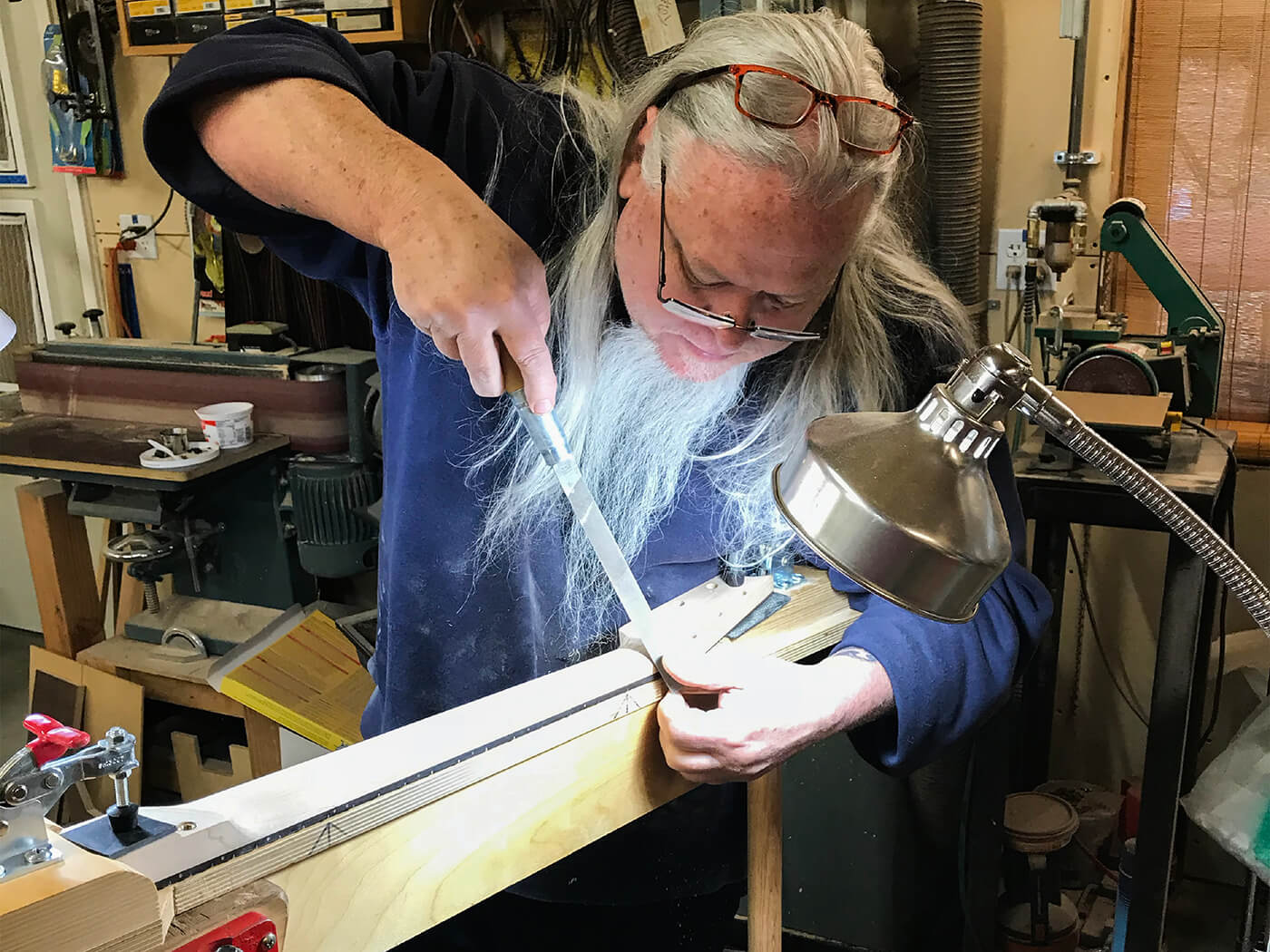
More than just building expensive guitars for star artists and wealthy clients, the Custom Shop – opened in 1987 with Page and Stevens at the helm as master luthiers – helped Fender re-establish its primacy in the guitar world following the rebuilding years of the mid-1980s, and became very much a showpiece for the storied guitar-maker et al.
Upon Stevens’ departure in 1990, Page took over as head of the Custom Shop. By now, the operation that began as a small loss leader of sorts, operating in an 800 sq ft corner of the Corona factory, was on its way to becoming a 30,000 sq ft facility with 60 dedicated employees. Come the end of the decade, however, Page’s heart was no longer in it.
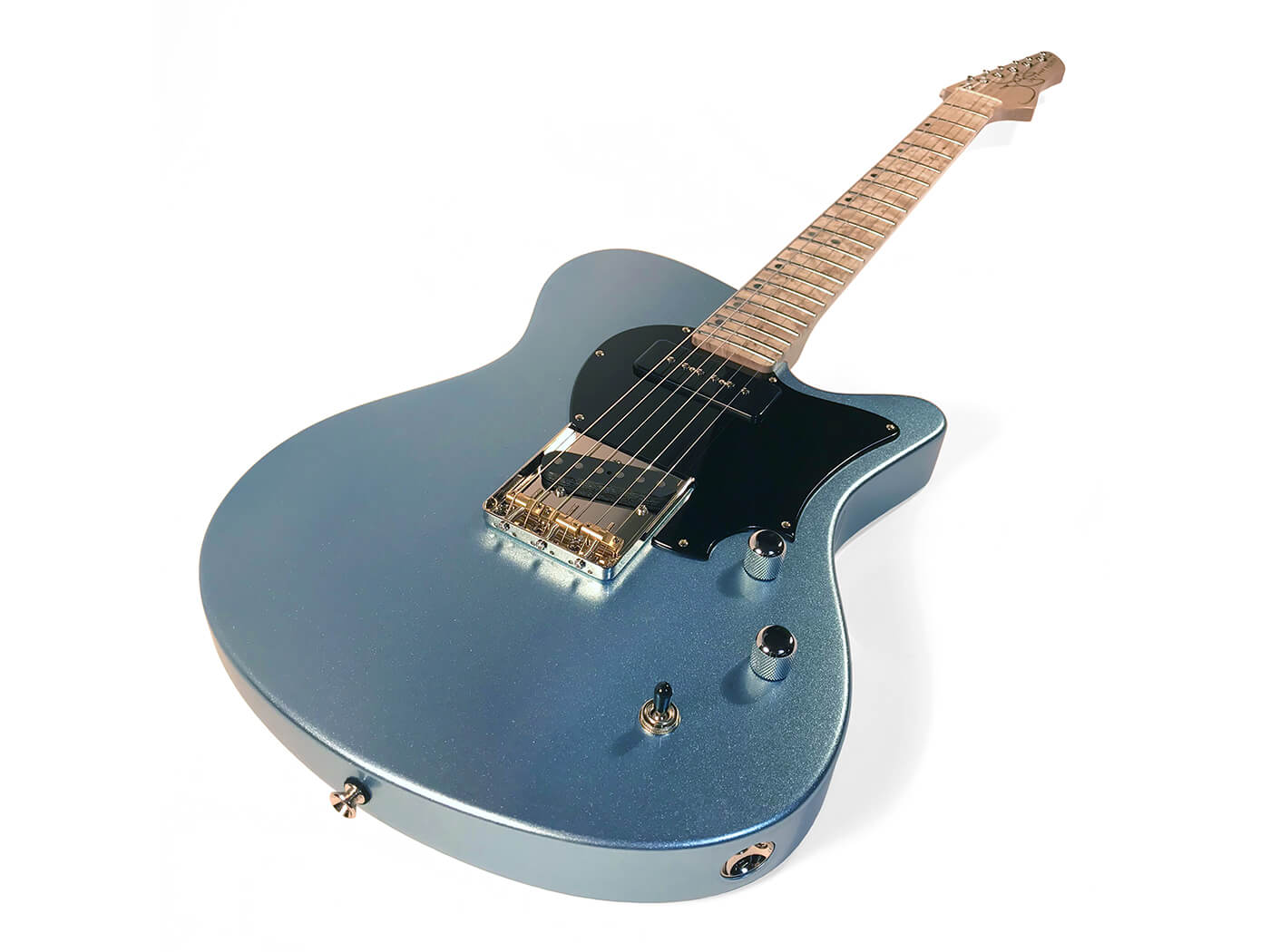
“To be honest – and I don’t like to say anything negative – but management and I just couldn’t agree,” says Page. “I mean, we didn’t agree for a long time [laughs] but I thought we’d been really successful, from this little seed of an idea to making, at that point, about $65 million in sales a year. We had become pretty much the premier custom shop in the world. Then they moved us from our own separate facility to a shop inside the factory, which was something I fought pretty heavily against. Ultimately, I am a man driven by the passion of an artist. Without passion in my work, I do not operate. Simply put, the passion left me.”
In 1998, Page made a soft departure into the role of executive director of the Fender Museum of Music and the Arts Foundation, which included the Kids Rock Free programme, a project for which he has expressed much enthusiasm. Four years later, having taken the Foundation successfully through its launch and establishment, he departed for Oregon to work with his hands again.
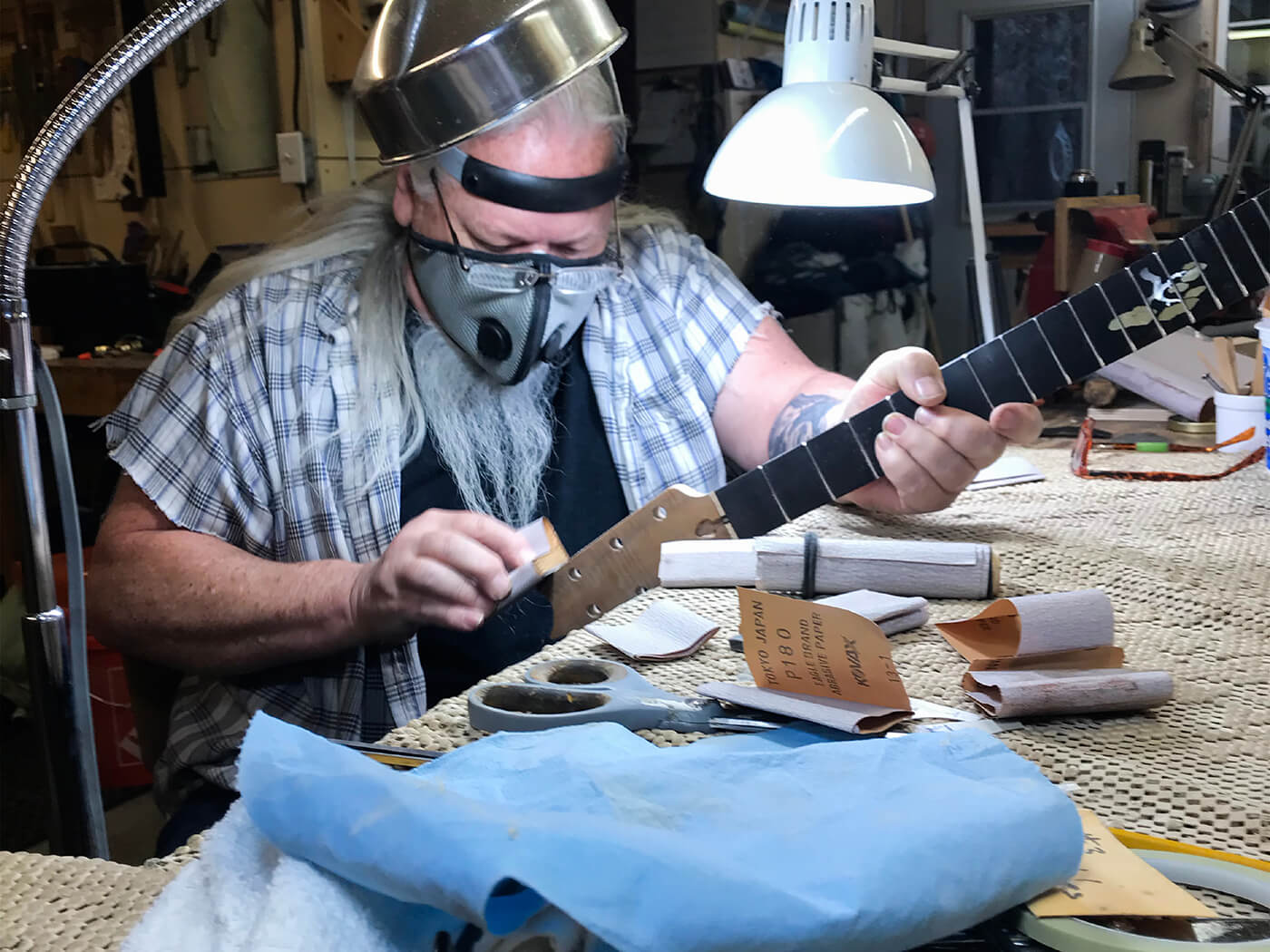
From art to guitars
For his first few years in Oregon, Page worked strictly on his art and custom-furniture projects. Then a student from a nearby high school, who had read a profile of the former Fender Custom Shop director in the local newspaper, got in touch to say he was building a guitar for his senior woodworking project, and asked if Page would mentor him.
“I thought, ‘Well, that’s kind of cool but I don’t have any parts or anything’,” says Page. “I had nothing. But working with him reignited the spark in me. I visited the Custom Shop shortly after that and saw some things I wasn’t really thrilled about. It wasn’t that they were doing anything wrong, it was just that I missed that start-to-finish, one-guy-hand-building-guitars kind of thing.
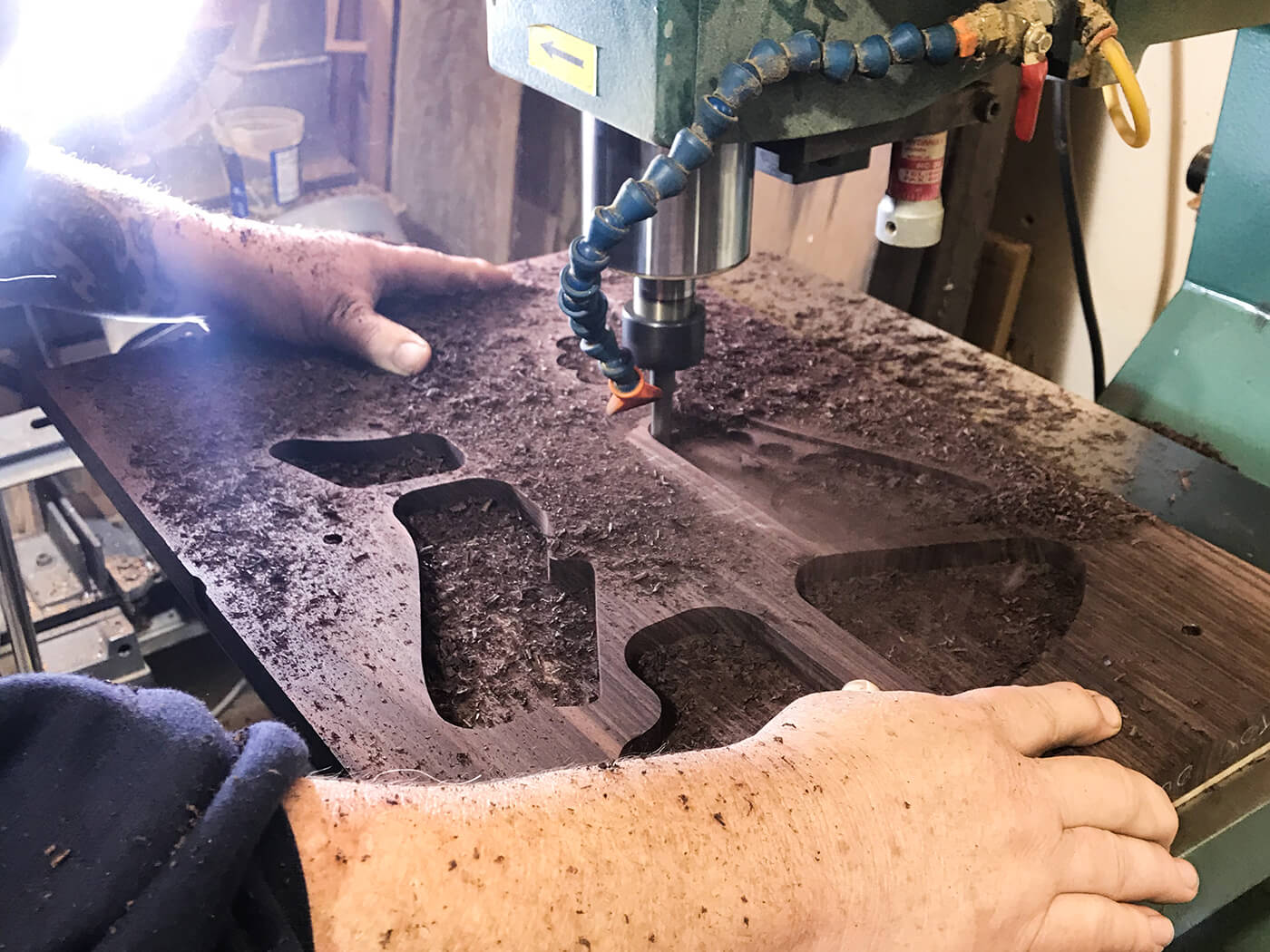
“For years, I had said, ‘I’m not going to get back into the industry until I can do cutting-edge new technology’. Then I realised that maybe cutting edge, for me, didn’t have to be about new technology but about turning the clock back. Not to, like, celebrate vintage, that wasn’t my thing, but just to celebrate human hands again. To say, ‘You know what? I’m going to build my guitars and I’m going to be honest about what I build and what I don’t build. I’m going to take as long as I want to design it and build it the way I want’. That’s why I got back into it.
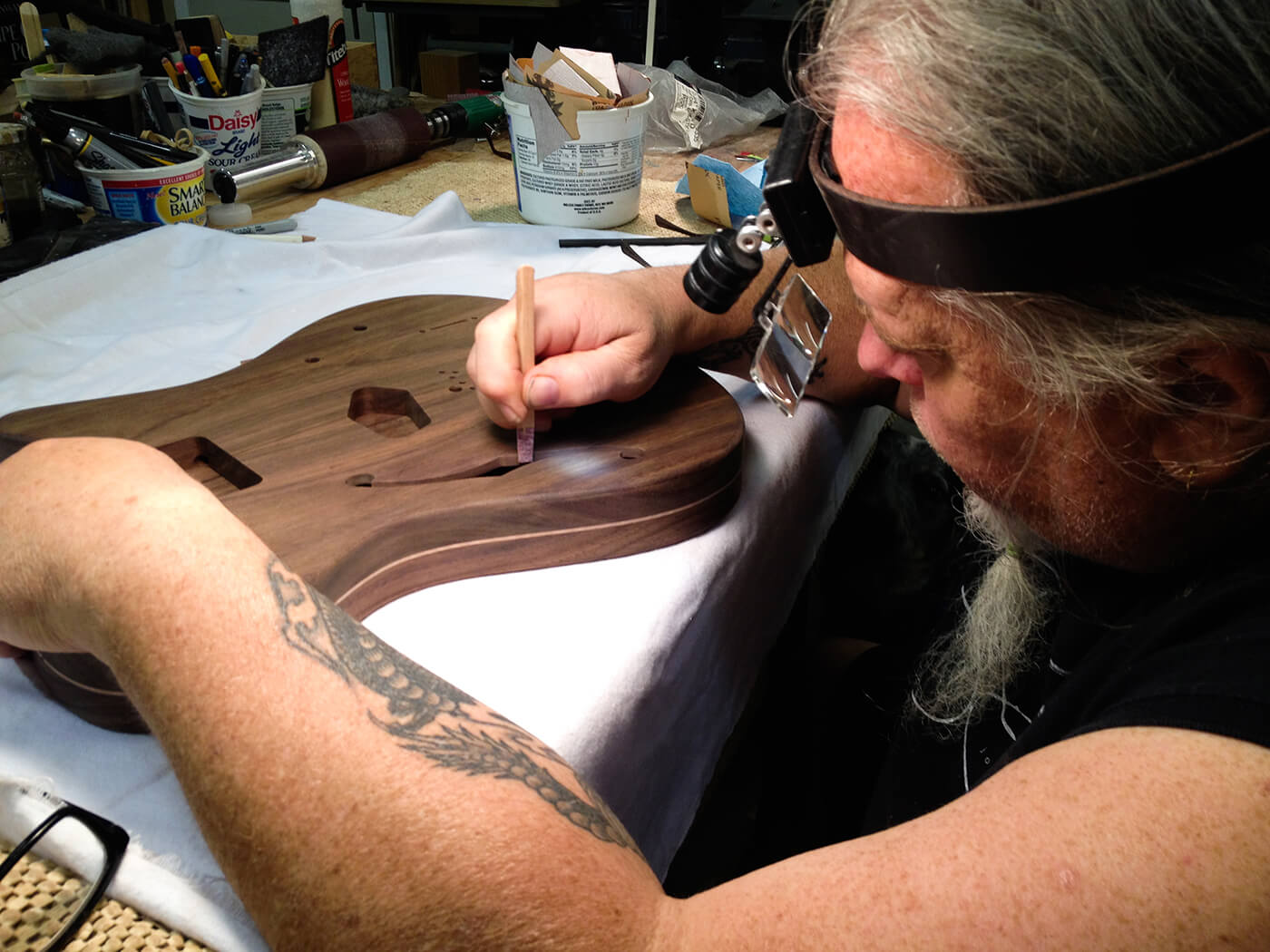
“It’s not just me,” Page continues. “There are lots of builders who have that same commitment and desire. But, from my background and coming from the Fender corporate background, it was unique. And that’s why I set myself up the way I did: low cost of living, own my own shop out in the forest, I can build the way I want to and not worry, ‘Oh, I’ve got to make this nut every month to survive’, and that deal.
“I was getting around that, finding out what my goal was, and then it all changed: ‘Let me make all the changes I wanted to make on Fenders but couldn’t back then. How would I design the Strat today? How would I design the Tele today? What do I like and what don’t I like?’ To not be shackled to a vintage, almost religious commitment to things meant I could change stuff like the reverse-angle [bridge] pickup. ‘That’s sacrilege!’ No, it’s not, man – listen to how much better it sounds with the pickup angled the other way!”

Adding the sparkle
Returning to elements of the classic bolt-neck design ethos, Page has applied his own artistic eye to the body styles, while taking on new and better ways of bolting it all together – literally, in some cases – to achieve enhanced renditions of the classics, while striving for that intimacy that he himself seeks in a guitar. Notable among these is his system of using threaded inserts in his necks, with bolts to attach them, rather than wood screws into raw wood, as per the original vintage Fender archetype.
“This is not some brand-new miraculous system I came up with on my own,” he says. “I fell in love with the whole neck-bolts-and-inserts system when the Custom Shop took over the Kubicki bass manufacturing from Phil Kubicki in 1990. I really liked what it added to the bass but I didn’t like that it was a steel insert. I love the sound of brass more than steel, so I use a brass insert myself. Tonally, it adds this high-end sparkle and complexity of overtones that normally isn’t there. People talk about the ‘twang’ of a Fender; I like that but not the ice pick twang. By reversing the angle of the [bridge] pickup, I sweetened that, and by putting those neck bolts in there, I added the sparkle above that twang, that I hear as a crispness, a pleasantness, and not an ear-splitting kind of tone.”

Having returned somewhat to the ethos of the Fender Bullet models of almost 40 years ago – though with a major upgrade in the overall veracity of both design and construction – Page has also created a range of John Page Classic models, manufactured in Japan under a licensing deal with Howard Swimmer, a former partner in the now-defunct Premier Builders Guild operation.
“I’m really happy with those guitars,” says Page. “I build very limited [Custom] guitars and that’s purposeful because I want to build the way I want to build. They’re also expensive, so that cuts off a large portion of the populous that might want to play my guitars. The Classics offer that more affordable option. I’m real happy to do that. It’s kind of like going back to some of the things I did at Fender. I love what I do now, building guitars here as I do.”
Find out more at johnpageguitars.com.
